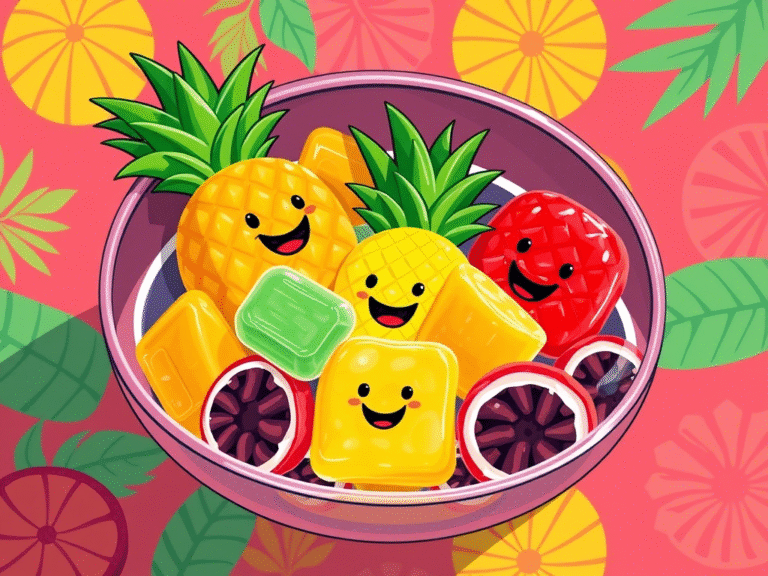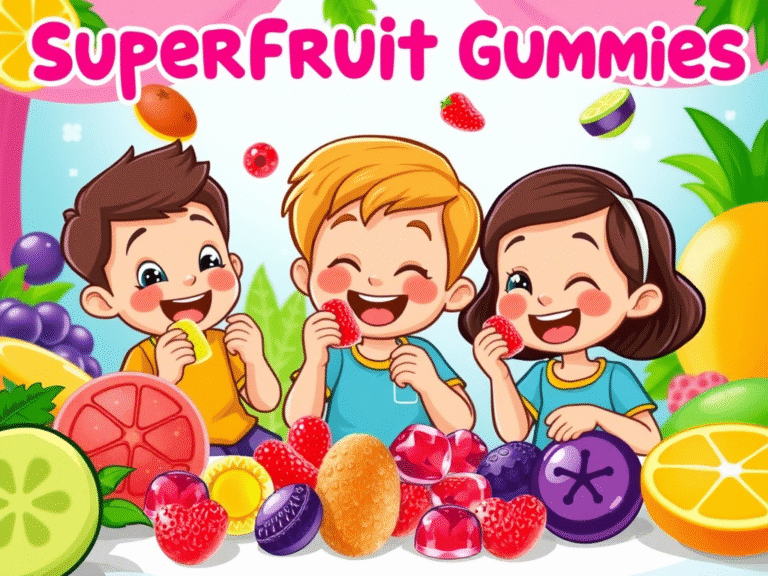How Do Plant-Based Gummies Taste Compared to Regular Ones?
Veggies and fruit instead of animal bitsEven if your kid is used to running around the front yard naked and wild, you probably still want to provide them with balanced, wholesome meals.
Everyone can agree fruit and vegetables are good for you, whether in whole form or gummy form. Plant-based gummies can taste just as delicious as any compound gummy.
There are some nuances but for most people, they are delicious and fulfilling. If you’re wondering how they compare, read on — I’ll explain it all to you.
Why Should You Care About the Taste of Gummies?
I’ll tell ya something, I love gummies. That chewy texture, that burst of fruity flavor — it’s happiness in candy form. But here’s the thing.
As someone who cares about what I eat, I have been trying to lean into plant-based eating. The question, of course, is how they taste.
I get it. Change can be scary. Especially for snacks we adore. But believe me, this is worth considering.
For if plant-based gummies manage to help you beat those cravings and also save your conscience and the planet, wouldn’t that be a win-win?
What Does the Research Say?
This has also been a subject of scientific inquiry. A study of 450 consumers across Germany, Spain and the UK in 2024 gave us some thought-provoking answers. Here’s the scoop:
Performance Across Countries
Plant-based gummies held their ground with gelatin-based gummies in the UK. That would mean people couldn’t make much sense of them.
In Spain, plant-based gummies proved more popular. And in Germany? They were less favored but still quite popular.
Why does this matter? It suggests taste preferences differ from region to region. But wherever you are, plant-based gummies are taking over.
Sensory Scores Speak Volumes
The research also examined sensory evaluation scores. The plant-based gummies ranked between 5.4 and 8.5 on a 9-point scale for texture.
The taste scores were between 5.25 and 8.8. Overall acceptability? Between 6.0 and 8.76. There are some pretty high numbers there. It informs me that people like these candies.
And consumer interest, we should not forget. As a whole, 60% of UK residents, 70% of Germans, and a staggering 85% of Spaniards were intrigued by plant-based gummies.
Handfuls linked them to good taste and ethical benefits. That’s a whole lot of happy snackers.
Ingredient Impact
Now, let’s talk about ingredients. Your typical gummy is made with gelatin to achieve that chewy texture we all know and love.
Gelatin is derived from animal collagen. Consider, however, a plant-based gummy that relies on alternatives such as pectin, agar-agar or carrageenan. And these swaps matter.
Pectin
Pectin is a rock star in the plant world. It comes from fruit, like apples and the rinds of citrus fruit.
Pectin is particularly popular in Spain because it results in a strong sweet hit, and slightly chewy (non-sticky) texture. Sounds perfect, right?
Agar-Agar and Guar Gum
Another dynamic duo is agar-agar (from seaweed) and guar gum (from beans). When blended — 1 percent agar-agar with 5.5 percent guar gum — they recreate gelatin’s chewiness and gumminess almost exactly.
Numbers don’t lie: chewiness of 1455.12 ± 1.75 N, and gumminess of 2251.11 ± 2.14 N Pretty neat, right?
These pairings prove that science and nature can collaborate to make something wonderful. And guess what? Most people don’t even know the difference.
Texture Preferences by Country
Taste is hardly all; texture counts, too. And guess what? Different countries have different tastes. Let’s take a closer look.
Spain Loves Chewable, Non-Sticky Gummies
Spain: These silly plant-based gummies dominate here. Why? Because they’re chewable and not sticky.
And the intense sweetness of pectin is a plus. If you love big flavors, Spanish-style gummies may be your jam.
The UK Likes Balance
In the UK, people like a complementary texture mix. Think slippy but with a bit of chew.
Flavors tend fruity and lingering, delivered courtesy of a mix of pectin and starch. It’s an ideal place in between.
Germany Sticks to Tradition
Germany tends to be a little more traditional. Gelatinous gummies are still king here. It’s their springy, slippery texture and even sweetness that people find so appealing. But that’s not to say plant-based isn’t on the rise.
Flavor Showdown
That’s where the fun begins is flavor. Normal varieties of gummies include that sweet, the kind that will stick to your teeth.
Gelatin helps to suspend those flavors, evoking nostalgia. But plant-based gummies are something else.
A Fruitier Twist
Vegan gummies tend to taste more natural, and the fruit flavors are more prominent. “They’re more of a fresher taste, not so artificial to me,” she said.
This resonates with health-conscious consumers who seek snacks that seem healthful.
Heat Resistance Matters Too
Fun fact for you: plant-based gummies are more heat tolerant than the nonvegan ones.
Their gummy candies are gelatin-based, and in the heat, all their tiny legs will melt into one big sticky pile of Band-Aid.
Vegan gummies hold their shape better, so they’re especially nice for hot climates or summer picnics.
Breaking Down the Numbers
For perspective, let’s compare the two, side by side. Check out this table:
| Feature | Regular Gummies (Gelatin) | Plant-Based Gummies (Pectin/Agar) |
| Texture | Chewy, elastic | Chewy, can be firmer/softer |
| Flavor | Rich, sugary | Natural, fruit-forward |
| Melting | Can melt in heat | More heat-resistant |
| Consumer Appeal | Familiar | Growing, especially in Spain/UK |
| Sensory Scores | High | 5.4–8.8 (texture/flavor) |
This comparison suggests that plant-based gummies are doing just fine. They may be a little different in taste and texture, but they’ve been winning over fans around the world.
Why Are People Switching?
It’s a lot about consumer demand. Increasingly, people simply want to eat plant-based foods for ethical reasons.
They care about animal welfare, sustainability and health. And guess what? Enter the plant-based gummy.
But even omnivores are getting on board. Consumer surveys also indicate that vegan and non-vegan consumers enjoy such flavors and textures, and that such preferences are country-specific.
And that’s the difference from the gummies of the past: These are plant-based gummies for everyone, not just the vegans.
Final Thoughts
There’s now hardly any difference in taste and texture between gummies made from plants rather than animal bones.
Now that gelling agents are being formulated more intelligently, they’re all but indistinguishable from regular gummies.
Tastes will always differ, but what is certain is that these candies are for life. Ready to give them a try?

I’m Kai, a fitness fiend and wellness geek from Vancouver. I love helping people find small, sustainable ways to feel better every day. From workouts, to good mental health, to smoothie recipes, I keep it real. Perfection is not my thing — progress is. When I’m not at the gym, I’m likely to be hiking or sampling a new meditation app







